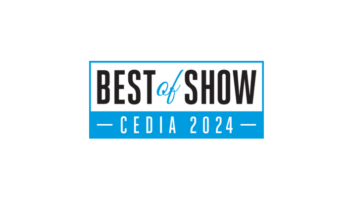
After surviving a global pandemic, supply chain disruptions, inventory gluts, inflation, and a threatened – and still possible – recession, could 2024 mark a return to normalcy for the U.S. consumer technology business?
Some resemblance to “normal” would be nice, but most industry observers view the new year with guarded optimism.
“I think 2024 will be decent but not super dynamic,” opines Bob Cole, CEO and founder of Philadelphia retailer World Wide Stereo. “I would expect better numbers than pre-pandemic but certainly nothing like we had during Covid. The industry is in flux as manufacturers decide who’s going to sell their products and how. Technology-driven products might take a hit as it’s hard to promote technological advances online or direct to the consumer from the manufacturer.”
From a pure numbers POV, CTA projects that total U.S. market industry revenues will grow 2.8% to $502 billion in 2024. “But high-interest rates, inflationary housing costs, rising debt, and dwindling savings may put pressure on consumer discretionary spending in 2024,” cautions Rick Kowalski, CTA’s senior director of business intelligence.
Some analysts aren’t even that sanguine about the industry’s prospects. “Overall, we anticipate high inflation will result in slower growth in sales volumes,” pessimistically projects Sudhakar Gudala, SVP and global head of Tata Consultancy Services’ CPG & Distribution Business Unit. “We’ve seen reduced foot traffic in 2023 among consumer electronics retailers, and this trend is likely to continue into the new year.”
Residual impact from all the issues that faced the industry in the last few years remains. While supply chain constraints seem to have largely been resolved, for instance, their impact has nonetheless increased costs and created operational challenges. “Companies will continue to adapt by finding new suppliers, adjusting product pricing, managing inventory more efficiently, and possibly rethinking entire supply chain strategies,” reports Elizabeth Parks, president and CMO of Parks Associates. “The new normal includes the continued rise in costs around materials, transportation, and labor seems to be becoming a more permanent fixture, impacting the bottom line.”
Category Scorecard
So which product categories are in for a recovery in 2024, and which categories remain weak?
Optimism continues to abound about the potential of the Matter smart home standard. Parks Associates says 37% of U.S. internet households currently shopping for smart home products consider Matter certification to be important or even critical in their purchase decision.
According to James Fishler, SVP of Samsung America’s Home Entertainment & Display Division, there are more than 14 billion connected devices on the market, and the average U.S. household has 22 connected devices. “Yet, about one-third of connected device users state that devices for a smart home add too much complexity to their lives,” Fishler admits. “These are some pretty tremendous numbers that speak to an underlying need for people to have better connectivity and customization options in their homes.”
TV sales aren’t likely to return to their pandemic boom levels. But Chris Hamdorf, TCL North America’s SVP insists that “overall sales will rise slightly due to increased demand for big screen TVs. Smaller and mid-screen TVs will likely decline in 2024. TV panel price instability could cause retail price changes and adjustments to promotional strategies. Retailers are challenged with selling entry-level XL TVs through the e-commerce channel as there is not enough profitability in these models to offset the high costs of free shipping to the consumer.”
PC sales also continue to slump, but the industry is hoping “consumers refresh products acquired in the early stages of the pandemic,” reports Tom Mainelli, IDC’s group vice president for devices and consumer research. “We’ll see legacy smartphone chip vendors such as Qualcomm push fully into new categories such as PCs, more companies will pursue custom silicon options, major players such as Intel will continue to transform their businesses, and we’ll see China continue to move to stand up more homegrown vendors. Silicon underpins everything in consumer electronics, and things are only going to get more interesting in the next year.”
The appliance market has been slow due to a weak housing market, and CTA expects smart appliance revenue will fall 4% in 2024. But “it seems like appliances that make life easier are gaining traction,” asserts Chad Evans, VP of Merchandising, AVB BrandSource. “We have seen a huge influx of new customers looking for the all-in-one washer/dryer combo. At this point there is only one brand offering this product and it has been tough to keep them in stock. I expect other brands to introduce similar products to capitalize on this new, emerging technology.”
What’s Up?
While the prognosis isn’t exactly positive for traditional product categories, industry observers believe that AI, with all its pros and cons, will play a major role in both existing and new products and services in 2024. (See “Is 2024 the Year of AI?”)
Other than AI, the one growing consumer technology sector isn’t products but services. According to CTA, services now make up over 30% of industry revenues.
“Consumers are increasingly looking for comprehensive offerings that go beyond hardware,” explains Parks. “Subscription-based services such as cloud storage, remote monitoring, and enhanced features are now critical differentiators. Companies are capitalizing on service revenue as a significant and stable income stream while solidifying customer loyalty.”
Industry Changes
Experts agree that the industry has resolved most of the pandemic supply chain bottlenecks and that inventory levels are returning to normal, to the benefit of consumers. “Many manufacturers and resellers are in an overstocked position,” says World Wide Stereo’s Cole. “Some have already panicked, others are settling down and dealing with it. 2024 could become a very promotional year.”
How, where, and from whom consumers are buying also has shifted. “Many consumer electronics brands have enhanced their online presence, offering seamless shopping experience through dedicated brand websites, and partnering with major e-commerce providers,” notes Tata’s Gudala. “The shift towards online sales channels is more pronounced as more and more consumers prefer convenience. With online promotions, improved logistics, virtual product promotions, and launches, there is an increase in adapting to the changing consumer behavior by the consumer electronics brands.”
As many industry experts have pointed out, consumer spending remains resilient and household earnings are finally starting to outpace inflation. “Our industry has always found a way to earn a strong share of the consumer’s wallet,” Andrew Sivori, head of LG Electronics home entertainment go-to-market strategy optimistically observes, “and I anticipate that the technological advancements we deliver next year will perpetuate that trend.”
See also: Smartphones 2024: Can Independent Retailers Get In The Business?













